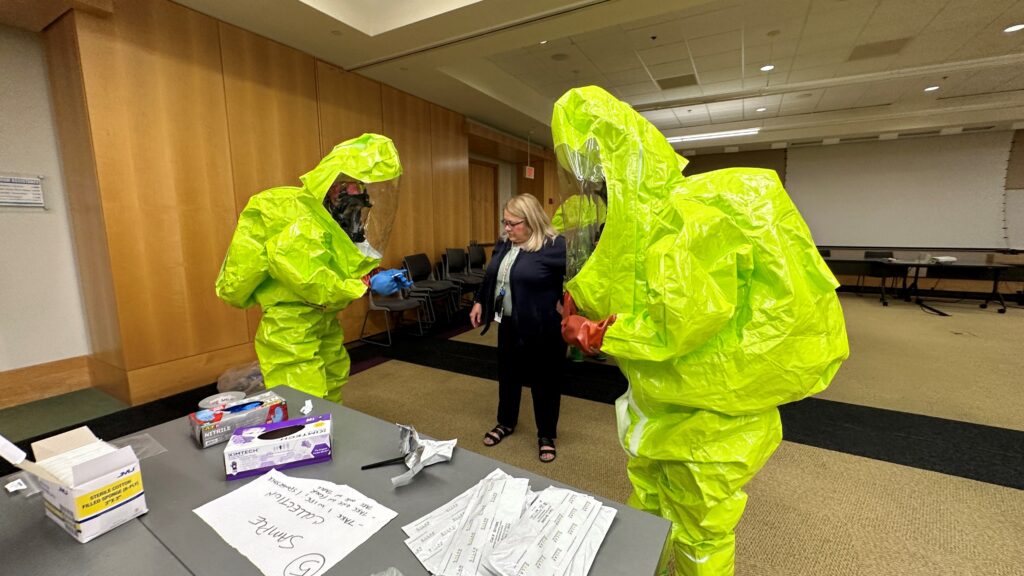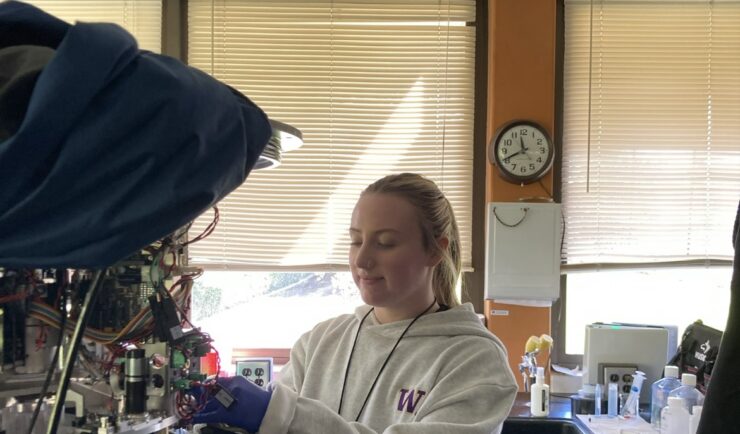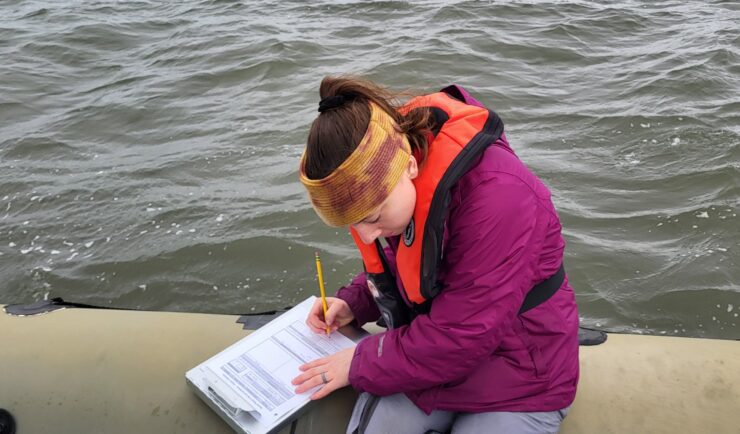

CSS scientists supporting the Environmental Protection Agency’s (EPA) Scientific and Technical Assistance for Consequence Management (STACM) contract are experienced in EPA’s emergency response efforts, both natural and manmade. To help EPA staff prepare for these emergency response efforts, CSS staff provide yearly response training. The training includes review of respiratory protection equipment, operation checks, a review of Level C, B, and A personal protective equipment (PPE). The various levels of PPE required for hazard response personnel provide increasing protection based on the hazardous material personnel are addressing. Level D provides minimum protect required using equipment such as gloves, coveralls, safety glasses, face shields, and chemical-resistant steel-toed shoes. Level A provides the highest level of protection for when the greatest hazard potential exists.
This equipment includes positive pressure, full face-piece self-contained breathing apparatus (SCBA); totally encapsulated chemical- and vapor-protective suit; inner and outer chemical-resistant gloves; and disposable protective suit, gloves, and boots. During the training, CSS staff have EPA personnel with the opportunity to try on and test the Level A PPE to try and complete some dexterity tasks, which adds some fun and entertainment to the training.

See More CSS Insights

Developing a Database for Ecosystem Service Models
CSS scientists have been major developers and contributors to the online U.S. Environmental Protection Agency’s EcoService Models Library (ESML) database since its inception in 2012. The ESML database contains detailed but concise descriptions of ecosystem service models to facilitate the selection of models by ecosystem scientists for a variety of management and research applications. The…

Monitoring Algal Blooms for Harmful Toxins
CSS employee owners support NOAA’s National Centers for Coastal Ocean Science (NCCOS) Harmful Algal Blooms (HAB) Sensor Development Team in their efforts to detect and monitor these harmful algal blooms in coastal waters where they are likely to occur. HAB monitoring is critical for detecting harmful toxins produced by some algae. When present in over…

Organizing Teams to Monitor Coastal Contaminants
For nearly 40 years NOAA’s National Mussel Watch Program has been monitoring contaminants in coastal waters in over 400 sites around the U.S. by testing sediment and bivalves, such as oysters and mussels. A CSS employee owner organizes and coordinates the regional missions to collect and test samples. This includes developing a schedule and coordinating…
